 Oceanic Submersibles: Pier Capponi, Giovanni da Procida, Goffredo Mameli, Tito Speri (1926-29)
Oceanic Submersibles: Pier Capponi, Giovanni da Procida, Goffredo Mameli, Tito Speri (1926-29)WW2 Italian Submarines
Balilla class (1927) | Ettore Fieramosca (1929) | Archimede class (1933) | Glauco class (1935) | Pietro Micca (1935) | Calvi class (1935) | Foca class (1937) | Marcello class (1938) | Brin class (1939) | Liuzzi class (1939) | Marconi class (1940) | Cagni class (1940) | Romolo class (1943)Mameli class (1926) | Pisani class (1928) | Bandiera class (1929) | Squalo class (1930) | Bragadin class (1929) | Settembrini class (1930) | Argonauta class (1931) | Sirena class (1933) | Argo class (1936) | Perla class (1936) | Adua class (1936) | Acciaio class (1941) | Flutto class (1942)
CM class (1943) | CC class (Laid down) | CA class (1942) | CB class (1942)
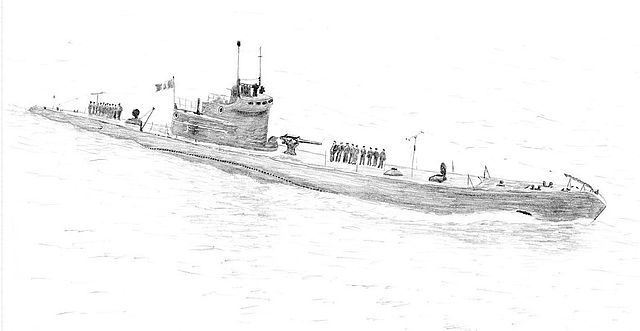
The Mameli-class submarine were the first built for the Regia Marina post-First World War. These were designed by engineer Cavallini in Tosi Yard and became the prototype for future ocean-going Italian submarines in the interwar. Four were built, operational in 1927-29 after being decided in 1923 and laid down in 1925. They benefited from the experience of ex-German U-Boats obtained as war reparation, and as oceanic types, won records for strenght and diving abilities at the time, with a crush depth below 330 ft (100 m) and Mameli reaching in tests 380 feet (116 m). They were however later corrected for stability, their engines were upgraded in 1942. They played a minor role in the Spanish Civil War of 1936–1939, supporting the Spanish Nationalists. Giovanni Da Procida is the only submarine known to have attempted to sink a ship during the Spanish Civil War, albeit unsuccessfully. All but one survived the Second World War: Pier Capponi, sunk on 31 March 1941 by HMS Rorqual. #ww2 #regiamarina #italiannavy #submarine #goffredomameli
Note: This is the first post on a serie on interwar and WW2 Italian submarines (sommergibli).
Development
In 1918, the Italian submarine arm ended relatively unscathed, with numerous types still recent and operational: The very last had been the six excellent oceanic, long range Micca class (825t) launched 1918-19. The last would be decommissioned in 1938. They were seconded by four boats of the 1917 Provana class (890t). In addition to these were c30 costal types (260-397t) of the Argonauta, N, H and X types, all recent (1916-17). So there was no urge to built new boats, at least until 1925 and the start of their replacement. Most would be retired between 1928 and 1935, with the two X class laid up in September 1940. The whole generation of oceanic, large, medium and coastal types used during WW2 were brand new boats built in the interwar.
The Italian submarines of the Mameli class were thus the first to be built after the First World War, started in 1925. All four were completed during 1929. The Mameli class represented the progenitor from which all future classes of post-war Italian submarines descended. Part of the design was prepared in 1924 based on previous designs like the Micca, with innovations in gestation and interesting ideas obtained from war prizes/reparation U-Boats.
The main idea for these new, large submarines, were to trye a “Cavallini” type, partially double hull of which the Mameli class were the first example. They became the best class of Italian submarines of their time, demonstrating excellent qualities of strenght, speed agility as well as underwater stability and on a tonnage enabling much more internal space for the pressure hull, far more spacious and comfortable.
Proof of their validity is the fact that in 1942, when the contemporary/later Balilla, Pisani and Fieramosca classes were gradually disarmed or about to be, it was designed to modernize the Mameli instead which led to the replacement of thei main diesels and other equipment, even though they had a short operational life as work was completed in the summer of 1943, and in September, it was all over. They still gave excellent results until they decommissioned. They were all built at Cantieri navali Tosi di Taranto, Taranto.
Design of the class
No plans retreived.
Hull and general design
The Mameli class had a well profiled hull, displacing 823 metric tons (810 long tons) surfaced and 1,009 metric tons (993 long tons) submerged. In dimensions they were lkarger tghan any previous Italian submarine, at 64.6 meters (211 ft 11 in) long, for a beam of 6.51 meters (21 ft 4 in) and a draft of 4.3 meters (14 ft 1 in). To compare, the previous Micca class measured 63.2 x 6.20 x 4.27 meters but 842/1244t. The great change was as said above her “Cavallini” type, partially double hull. This added extra strenght, enabled quick diving, excellent underwater agility and gace them an operational diving depth of 90 meters (300 ft). Their crew amounted to 49 officers and enlisted men.
The conning tower was particular as having an overhanging top spection with windows, used as bridge in heavy weather.
The deck gun was mounted close to the CT, on an extended platform, unshielded. Aft of the bathtub and periscopes there was another platform with two spots for single Breda 13.2 mm heavy machine guns. As customary for the time, they had a droppable under keel, and a bow saw to cut underwater cables or nets. There was a low wireless cable supported by poles fore and aft and anchored at the bow and stern, attached to a portico on the CT, which was the German system. The French on the other hands had their wireless cables hanging high, supported by two telecopic poles.
Powerplant
While surfaced, the Mameli class had two Tosi 1,550-brake-horsepower (1,156 kW) diesel engines, on two shafts. When submerged, the same propeller were driven each by a 550-horsepower (410 kW) electric motor. As a result they could reach 15 knots (28 km/h, 17 mph) surfaced, 7.2 knots (13.3 km/h; 8.3 mph) underwater, which were good performances for the time. To compare the 1916-19 Micca class were onluy capable of 11 kts/ 10.9 kts. While surfaced, the Mameli class were capable of a 4,360 nautical miles (8,070 km; 5,020 mi) range at 8 knots (15 km/h; 9.2 mph). While submerged, they had reached 110 nmi (200 km; 130 mi) at 3 knots (5.6 km/h; 3.5 mph). After 1942 refit they obtained new Tosi engines rated for 4,000 bhp, enabling them to reach 17kts surfaced again, and for longer periods.
Armament
The main armament was classic for the time: Six 533 mm (21 inches) torpedo tubes, including four in the bow and two in the stern plus 10 torpedoes total, meaning six pre-loaded and four in reserve. They had also a single deck gun, Ansaldo 102 mm (4 in) forward. The conning tower rear platform supported an anti-aircraft armament of two single 13.2 mm (0.52 in) heavy machine guns.
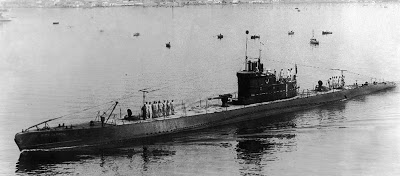
Main: 102mm/35 Schneider-Ansaldo Modello 1914
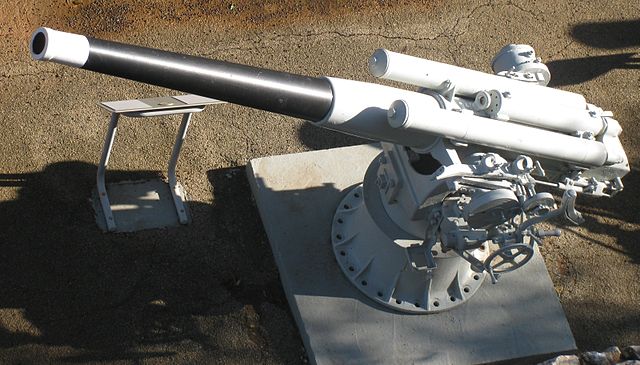
The 102/35 Schneider-Ansaldo Modello 1914 Entered service in 1917. It was developed by Ansaldo and Schneider in France, based on the British QF 4 Mk. V. It was already used in the First World War on some Italian submarines.
It armed (as secondary) the Mirabello, Rosolino Pilo, Sirtori, Insidioso and Audace class destroyers, armed Yacht Diana, seaplane carrier Giuseppe Miraglia thesubmarine classes Mameli, Vettor Pisani, Bragadin, Squalo, Bandiera, Argonauta and Settembrini. So a lot of ammunitions was manufactured and stockpiled. The 102mm/35 remained in service until the end of the Second World War with some 110 in service. Many were also used by the Royal Army, Territorial anti-aircraft defence Militia, Maritime Militia and border guard and on two Poz type railway wagons (Regia Marina armoured trains). In 1941 Fiat plant in Tripoli placed seven 102mm/35 cannon on Fiat 634N trucks used by the Regia Marina, taken from the defenses of Benghazi, creating two mobile batteries served by Maritime Militia personnel with extra vehicles armed with 76mm/30 naval guns on the same 634N chassis. They served with the Armored Division “Ariete”, and Motorized Division “Trento”.
Three models were produced, the Schneider-Ansaldo Mod. 1914, Schneider-Ansaldo-Vickers Mod. 1914-1915, Vickers-Terni Mod. 1925 and OTO Modello 1933.
⚙ specifications 102mm/35 Schneider-Ansaldo Modello 1914 |
|
| Weight | 1 220 kg |
| Barrel lenght | 3,733 mm, constant right-handed rifling, 32 lines |
| Elevation/Traverse | -5° to +45°, 300 |
| Loading system | Horizontal or Vertical sliding breech block |
| Muzzle velocity | 750 m/s |
| Range | 11,700 m |
| Guidance | Visual, sight |
| Crew | |
| Round | 101.6 mm HE and AP unitary 13.74-16 kg |
| Rate of Fire | 7 rpm |
AA: 2x Breda Modello 31
 Designer: Hotchkiss, Design date: 1929. Builder: Ernesto Breda for Mechanical Constructions; from 1931 onwards.
Designer: Hotchkiss, Design date: 1929. Builder: Ernesto Breda for Mechanical Constructions; from 1931 onwards.
Adapted design from Hotchkiss also used by the French Navy and Army, itself derived from the 1914 Hotchkiss air cooled LMG.
⚙ specifications Breda mod.31 |
|
| Weight | 47.5 kg |
| Barrel lenght | 1,652 mm, Barrel 1000 mm |
| Elevation/Traverse | +85°, 360° |
| Loading system | Recoil gas driven piston, 30-round magazines |
| Muzzle velocity | 790/805 m/s |
| Range | 2 km (1.2 mi) at +45°, 3.98 km (13,100 ft) +80° |
| Guidance | Visual, spider sight |
| Crew | 3 |
| Round | 13.2 × 99mm ammo 112–120 g+ 42–51 g |
| Rate of Fire | Theoretical 500 rpm, cyclic 400 rpm, sustained 250 rpm |
Torpedoes
Model unknown but since the new models appeared in 1935, by the time the Mameli class was completed they had WWI models, from Silurificio Whitehead di Fiume.
I was likely of the common A140/450 built by Silurificio Italia after 1920: 29-32 knots, 6,000-4,000 m range settings, 1,140 Kgs, TNT warhead 140 kg, air tank loaded to 170 atmospheres. It was however quite visible due to the comprssed air bubble trail, especially in calm waters.

⚙ specifications |
|
| Displacement | |
| Dimensions | 64.6 x 6.51 x 4.3 m (212 x 21 ft 4 in x 14 ft 1 in) |
| Propulsion | 1,550 bhp (1,160 kW) 2 diesels/550 hp (410 kW) 2 electric motors |
| Speed | 15 knots (28 km/h; 17 mph) surfaced, 8 knots (15 km/h; 9.2 mph) submerged |
| Range | 4,360 nmi (8,070 km; 5,020 mi) at 8 knots surfaced, 110 nmi (200 km; 130 mi) at 3 knots submerged |
| Test depth | 90 m (300 ft) |
| Armament | 1x 102 mm deck gun, 2× 13.2 mm HMGs, 6× 533 mm (21 in) TTs (4 bow, 2 stern) |
| Crew | 49 |
They operated in offensive missions in the first phase of the Second World War (1940-1941), achieving two minor successes, namely the sinking, in the first months of the war, of the small steamships Helge and Beme by the Pier Capponi and the Goffredo Mameli respectively. The only unit lost in the conflict was the Pier Capponi, torpedoed by the submarine Rorqual in 1941; the other three, intended mainly for training activities from the first months of 1941, operated with the same functions during the co-belligerence between Italy and the Allies and were dismantled after the war.
 Goffredo Mameli (1926)
Goffredo Mameli (1926)
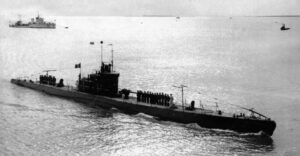 Originally Mameli should have been called “Masaniello”, but on 16 January 1927 so before completion the name was changed to Goffredo Mameli, an Italian patriot, poet, writer and a notable figure in the Risorgimento.
Originally Mameli should have been called “Masaniello”, but on 16 January 1927 so before completion the name was changed to Goffredo Mameli, an Italian patriot, poet, writer and a notable figure in the Risorgimento.
On 29 September 1928, while in Taranto she had a collision with the tug San Pietro, but was only lightly damaged. On 19 April 1929, while underway navigation from Cagliari to Almeria, a rogue wave caused captain Silvio Delia to fell overboard, he was never seen again. Upon returning from the cruise on 13 October in Genoa, she received the battle flag from “A Compagna” association.
At the start of the thirties, Mameli went on a cruise with her sisters in eastern Mediterranean. They stopped in Thessaloniki, Leros and Rhodes while taking part in combined air-naval exercises.
When the Second World War started she was under command of c.c. Nicola Maiorana, and was oreded south of Crete where, on the night of 1-2 August 1940, she unsuccessfully launched five torpedoes against the Greek steamship Raula (1044 GRT), and then surfaced and finished her off by guinfire after ordering to crew to abandon her.
She made four other missions, off Malta and the Cyrenaic coast and by 1941 completed three more. O 9 September 1941 she tried to interfere with Op. “Coat” placing herself some 90 miles SW of Malta, but did not sight the convoy. After this patrol, the poor state of the engines had her assigned to the Submarine School in Pola. In 1942 she underwent and engine overhaul and had a few more patorls under the armistice was announced. During the co-belligerence she was used for Allied ASW exercises, based in Bermuda, and scrapped postwar.
 Pier Capponi (1927)
Pier Capponi (1927)

Pier Capponi was completed in 1929 and commissioned on 19 January 1929. She took part in the same eastern Mediterranean cruise with her sisters. She also clandestinely participated in the Spanish war, but operating in the Aegean sea. On 3 September 1937 she left Leros but was damaged underway and was back to port for repairs. On 5 September she made another patrol without result.
In 1940, sshe completed her war patorl from 21 to 25 June 1940, between Pantelleria and Tunisia, intended to prey on French troopship to France under command of t.v. Romeo Romei. 22 June 35 min. past midnight while surdfaced she sighted the armed Swedish steamer Helge (1888 GRT) chartered by the Allies underway to Malta, launched a first torpedo she tshe spotted and dodged, he started to shell her until her cannon jammed, then she turned to launching two more torpedoes, and hit. Helge sank around 1.50 am.
On 6 July, she was ordered off Malta. At 11.20pm on 11 July she sighted three escorted British battleships. At 11.40pm she launched two torpedoes while surfaced but missed. She moved away and submerged while under chased by destroyers, and depth charged, taking damage. She later emerged to recharge her batteries but sighted a minesweeper from the Maltese coastal surveillance and at the time, mistakenly believed it was French and intending to surrender. The Minesweeper approached until machine gun range, and opened fire on the unspected deck crew of Capponi, and soon after, coastal batteries open fire while she submerged.
Between 1st and 4th September she was posted 30 miles SE of Malta and unsuccessfully attacked a passing by destroyer, submerged after being spotted. Around midnight, November 9th she spotted two battleships, an aircraft carrier, cruisers and destroyers at 10k meters distance (operation “Coat”), launched three torpedoes from 4,000 meters, felt explosions, but British sources cliamed these just ran out and self exploded. Not hit was reported.
On 24 February 1941 she left Messina but returned after an engine breakdown. On 31 March she left Messina for La Spezia, spotted by HMS Rorqual underway. The latter launched torpedoes and two hit her. She sank with all hands (5 officers, 33 ratings) about 17 miles south of Stromboli. The Medaglie d’oro for military valor was awarded to Commander Romei.
 Giovanni da Procida (1928)
Giovanni da Procida (1928)
Giovanni Da Procida was completed in 1929. Same remark as above. She also took part in the Spanish war, in the Aegean, making 21 patrols but only launched a single torpedo, not hit.
In June 1938 with Tito Speri in Taranto, she tested the «Girosi» device, a flamethrower allowing to ignite fuel previously expelled on the surface without surfacing, to hinder transit obligatory passages or port entrances. Surfaceed, she released some fuel, set on fire with this, and demonstrated its effectiveness, which was installed on 23 submarines, but was never used.
From September and November 1938 she was based in Leros.
From June 1940 to April 1941, she was assigned to XXXI Submarine Squadron in Messina. She made 16 unsuccessful patrols under Lt.Cdr. Guido D’Alterio in the Strait of Sicily, Dodecanese, Malta and the Otranto Canal. She had one spotting, launched two torpedoes at an enemy submarine but missed.
From April 1941, until February 1942, she operated from La Spezia making ASW experiments and exercises, used as target.
In September 1941, she was deployed to counter Operation Halberd to Malta, but the Italian commands feared to send them in Ligurian Sea so she was deployed in a defensive ambush position off the coast. On 9 February 1942 she started a modernization which ended in August. She made no more patrols until the armistice as it happened while still in overhaul. She took part in the co-belligerence based in Bermuda for exercises.
 Tito Speri (1928)
Tito Speri (1928)
Tito Speri was completed in 1929. In May 1933, she made a 19 days eastern Mediterranean cruise with her sisters. She later made a cruise in the Atlantic, testing her oceanic capabilities.
On the morning of 7 December 1935, while in exercises in the Gulf of Taranto, she accidentally rammed Marcantonio Bragadin and the latter almost capsized due to the impact. Speri had herself a leak in the bow, and settled on the shallow seabed. The crew survived long enough to harness and lift her with pontoons while divers after having verified her state confirmed the crew was trapped inside. The latter managed to fire-free and passed through stern tubes of the stern still emerging. There were no casualties. She towed to Taranto and repaired.
In 1937 she took part in the Spanish Civil War, making a single patrol of 11h, sighting four ships buit could not attack due to the heavy weather.
In June 1938 she also tested the «Girosi» apparatus.
From June 1940 to March 1941 Speri, within the 31st Submarine Squadron, operated based in Messina, initially in command of the t.v. Cesare Girosi (the inventor of the apparatus of the same name) As the war progressed the made 19 war patrols under c.c. Mario Vannutelli, off the coast of Alexandria, Otranto Channel, off Corfu and Crete and in the Gulf of Taranto.
In May 1941, her engines were seriously worn out so she was sent to the Submarine School of Pola uner Enzo Grossi and later Rino Erler, performing 65 training missions until January 1942, training ASW patrol vessels in the Upper Adriatic. In February 1942 she had her engine change in Taranto and ws still there when the Armistice was signed.
During the co-belligerence (February 1944 to August 1945) she was in Bermuda, making 120 sorties for allied ASW training, then in Portsmouth, Casco Bay and Guantanamo. Mission could last from seven to ten days for a small Task Force (aircraft carrier hunter killer groups, generallu 8 ships). For her commendable commitment, Speri received compliments from US Admiral Ernest “Semper Iratus” J. King.
Read More/Src
Books
Bagnasco, Erminio (1977). Submarines of World War Two. Annapolis, Maryland: Naval Institute Press.
Brescia, Maurizio (2012). Mussolini’s Navy: A Reference Guide to the Regina Marina 1930–45.
Chesneau, Roger, ed. (1980). Conway’s All the World’s Fighting Ships 1922–1946. Greenwich, UK: Conway Maritime Press.
Rohwer, Jürgen (2005). Chronology of the War at Sea 1939–1945: The Naval History of World War Two (Third Revised ed.).
Giorgio Giorgerini, Uomini sul fondo. Storia del sommergibilismo italiano dalle origini a oggi, Mondadori, 2002
Links
on uboat.net 1 2 3 4
http://www.xmasgrupsom.com mameli.html
marina.difesa.it/ da_procida
on navypedia.org/
it.wikipedia.org/ 102/35_Mod. 1914
sommergibili.com titosperi.htm
trentoincina.it Procida
trentoincina.it/ Speri
it.wikipedia.org/wiki/Classe_Mameli
weaponsandwarfare.com italian-submarines-of-world-war-ii/
worldnavalships.com /mameli_class.htm
thenationalnews.com untilm story Italian sub sunk off uae coast/
Videos
Model Kits
Non so far found. Idea for a manufacturer or 3D printing guys ?
3D
None found.

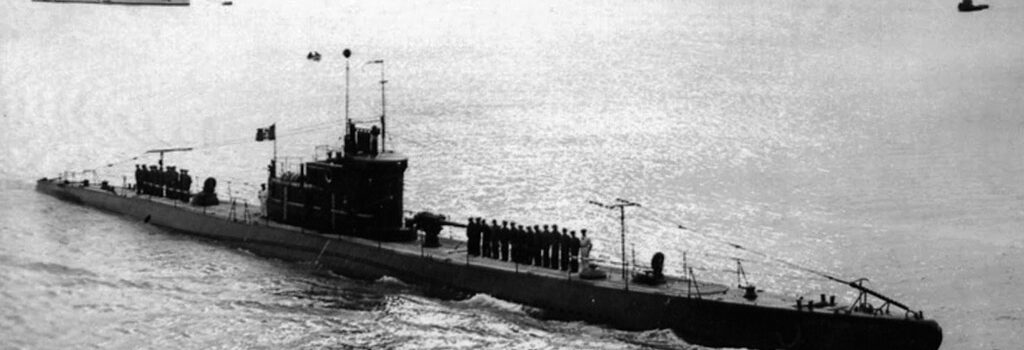
 Latest Facebook Entry -
Latest Facebook Entry -  X(Tweeter) Naval Encyclopedia's deck archive
X(Tweeter) Naval Encyclopedia's deck archive Instagram (@navalencyc)
Instagram (@navalencyc)





 French Navy
French Navy Royal Navy
Royal Navy Russian Navy
Russian Navy Armada Espanola
Armada Espanola Austrian Navy
Austrian Navy K.u.K. Kriegsmarine
K.u.K. Kriegsmarine Dansk Marine
Dansk Marine Nautiko Hellenon
Nautiko Hellenon Koninklije Marine 1870
Koninklije Marine 1870 Marinha do Brasil
Marinha do Brasil Osmanlı Donanması
Osmanlı Donanması Marina Do Peru
Marina Do Peru Marinha do Portugal
Marinha do Portugal Regia Marina 1870
Regia Marina 1870 Nihhon Kaigun 1870
Nihhon Kaigun 1870 Preußische Marine 1870
Preußische Marine 1870 Russkiy Flot 1870
Russkiy Flot 1870 Svenska marinen
Svenska marinen Søværnet
Søværnet Union Navy
Union Navy Confederate Navy
Confederate Navy Armada de Argentina
Armada de Argentina Imperial Chinese Navy
Imperial Chinese Navy Marinha do Portugal
Marinha do Portugal Mexico
Mexico Kaiserliche Marine
Kaiserliche Marine 1898 US Navy
1898 US Navy Sovietskiy Flot
Sovietskiy Flot Royal Canadian Navy
Royal Canadian Navy Royal Australian Navy
Royal Australian Navy RNZN Fleet
RNZN Fleet Chinese Navy 1937
Chinese Navy 1937 Kriegsmarine
Kriegsmarine Chilean Navy
Chilean Navy Danish Navy
Danish Navy Finnish Navy
Finnish Navy Hellenic Navy
Hellenic Navy Polish Navy
Polish Navy Romanian Navy
Romanian Navy Turkish Navy
Turkish Navy Royal Yugoslav Navy
Royal Yugoslav Navy Royal Thai Navy
Royal Thai Navy Minor Navies
Minor Navies Albania
Albania Austria
Austria Belgium
Belgium Columbia
Columbia Costa Rica
Costa Rica Cuba
Cuba Czechoslovakia
Czechoslovakia Dominican Republic
Dominican Republic Haiti
Haiti Hungary
Hungary Honduras
Honduras Estonia
Estonia Iceland
Iceland Eire
Eire Equador
Equador Iran
Iran Iraq
Iraq Latvia
Latvia Liberia
Liberia Lithuania
Lithuania Mandchukuo
Mandchukuo Morocco
Morocco Nicaragua
Nicaragua Persia
Persia San Salvador
San Salvador Sarawak
Sarawak Uruguay
Uruguay Venezuela
Venezuela Zanzibar
Zanzibar Warsaw Pact Navies
Warsaw Pact Navies Bulgaria
Bulgaria Hungary
Hungary

 Bundesmarine
Bundesmarine Dutch Navy
Dutch Navy Hellenic Navy
Hellenic Navy Marina Militare
Marina Militare Yugoslav Navy
Yugoslav Navy Chinese Navy
Chinese Navy Indian Navy
Indian Navy Indonesian Navy
Indonesian Navy JMSDF
JMSDF North Korean Navy
North Korean Navy Pakistani Navy
Pakistani Navy Philippines Navy
Philippines Navy ROKN
ROKN Rep. of Singapore Navy
Rep. of Singapore Navy Taiwanese Navy
Taiwanese Navy IDF Navy
IDF Navy Saudi Navy
Saudi Navy Royal New Zealand Navy
Royal New Zealand Navy Egyptian Navy
Egyptian Navy South African Navy
South African Navy






























 Ukrainian Navy
Ukrainian Navy dbodesign
dbodesign